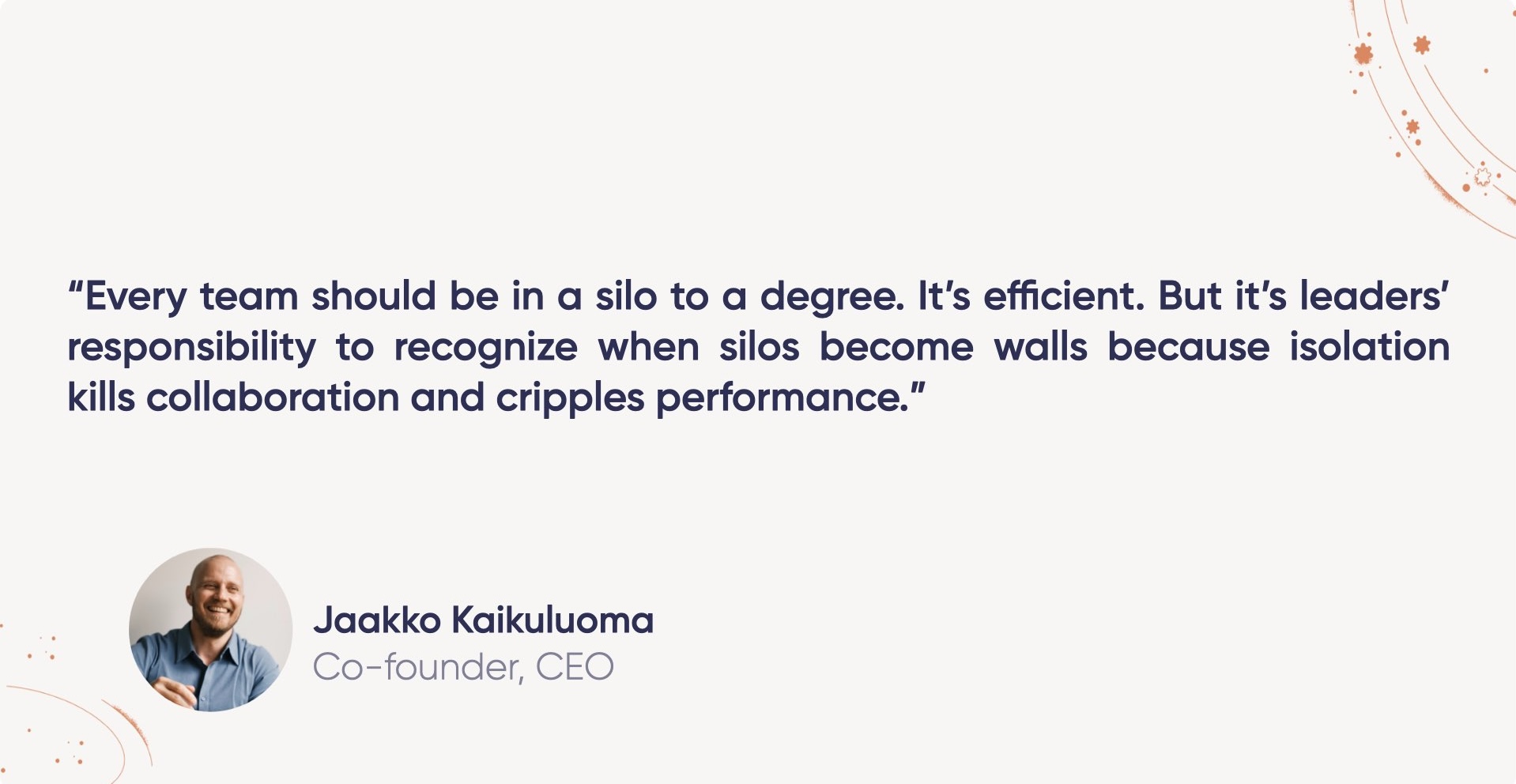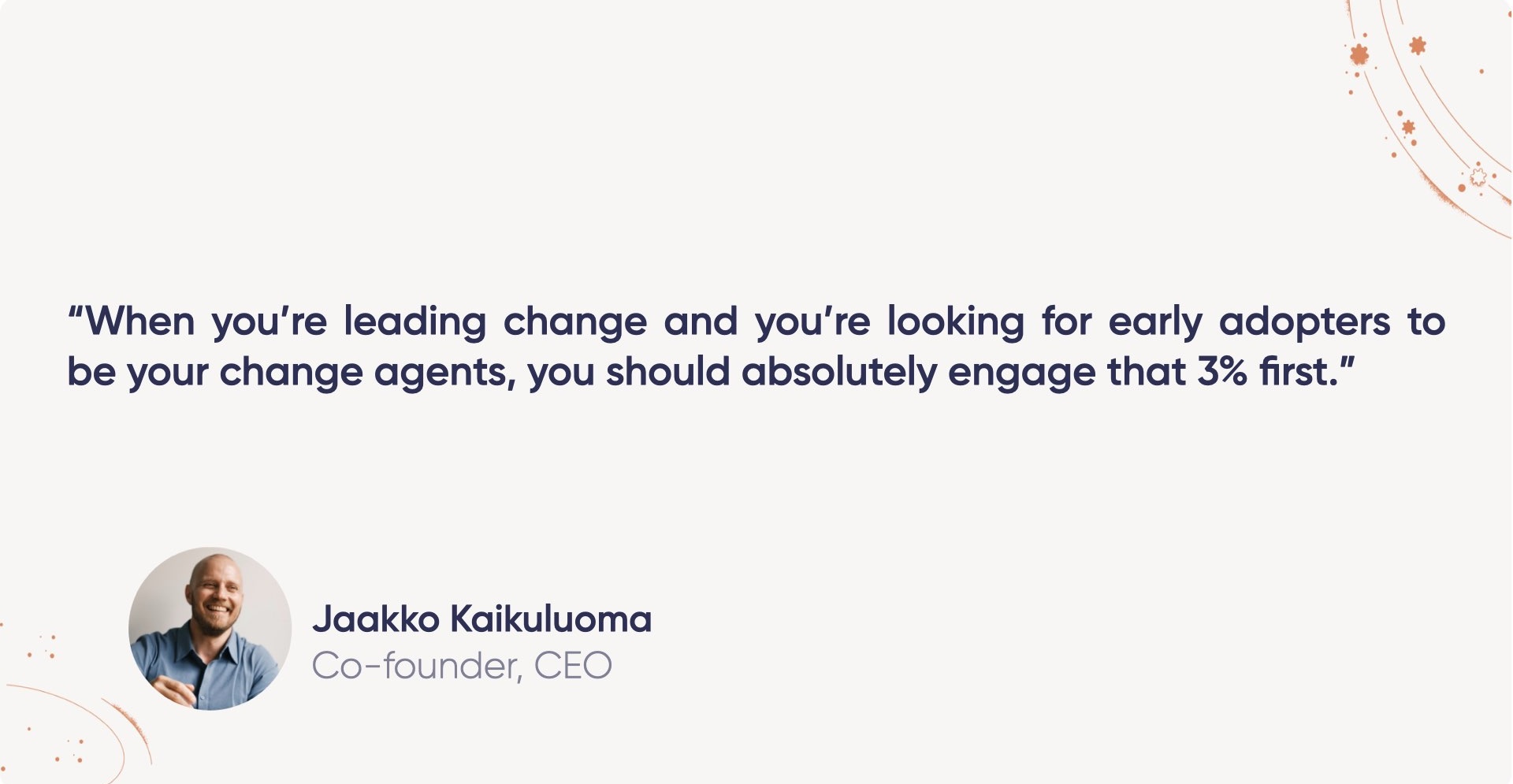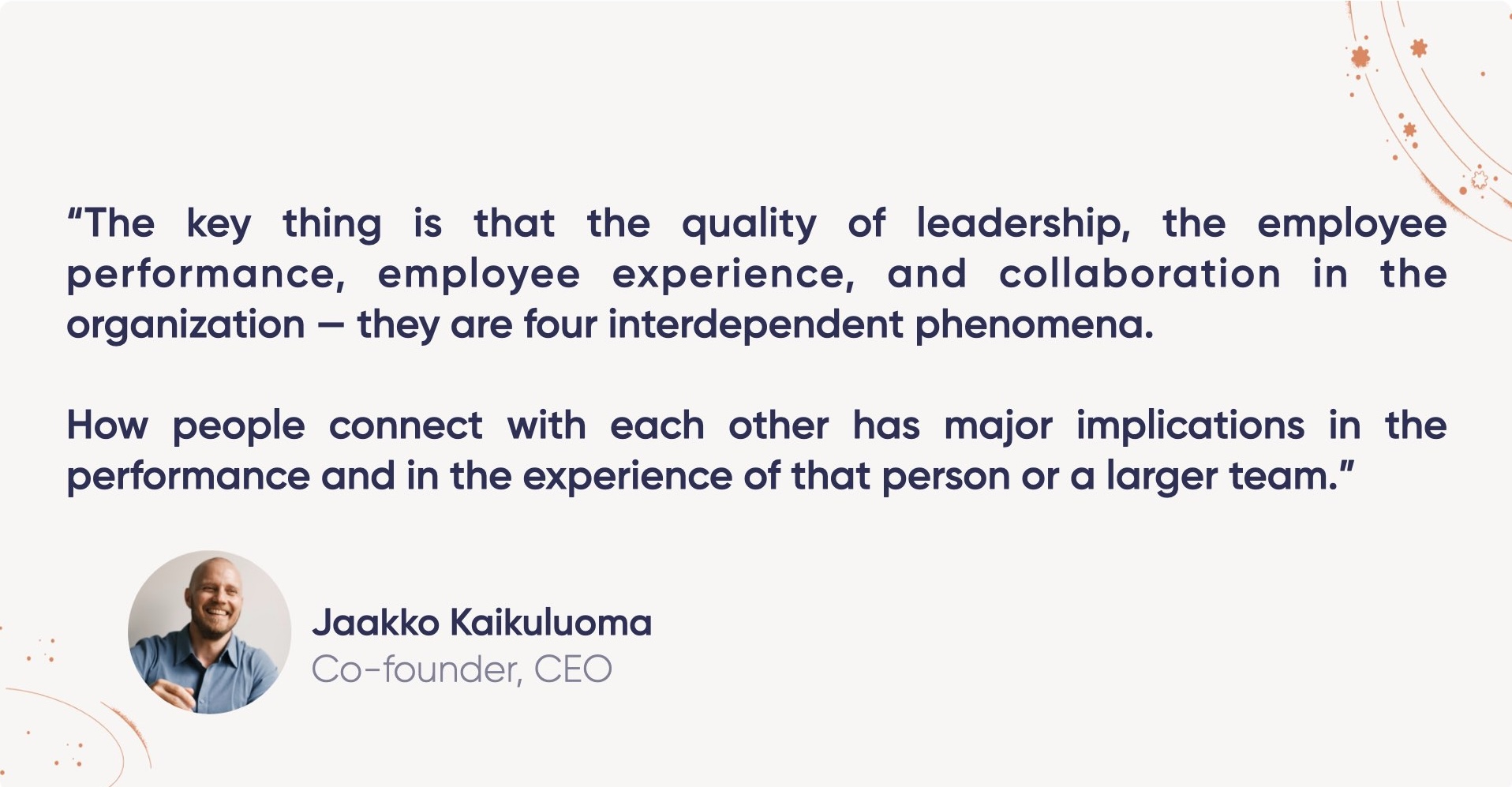5 Easy Steps to Break Down Silos in the Workplace
October 9, 2025This is how silos hurt companies. Not through loud conflicts, but through the slow loss of connection and trust. Surveys and pulse checks rarely spot these hidden patterns. Organizational Network Analysis (ONA) does. It maps the real connections between people and shows where collaboration is breaking down.
One of our clients called me on a Tuesday. She sounded frustrated: “We’re losing our best designers, but I don’t know why.”
When I studied her company’s network, the issue was obvious. The executive team was tightly connected with software engineers. But designers? They were left on the outside with no links to leadership.
This is how silos hurt companies. Not through loud conflicts, but through the slow loss of connection and trust.
Surveys and pulse checks rarely spot these hidden patterns. Organizational Network Analysis (ONA) does. It maps the real connections between people and shows where collaboration is breaking down.
This guide explains what silos are, why they matter, and how leaders can break them down using data and proven methods.
What Are Organizational Silos?
Silos form when teams, departments, or groups become cut off from the rest of the company. They block the flow of information, limit collaboration, and stop people from working together effectively.
But here’s the truth many leaders miss: silos are not always bad.
Some level of silo is natural. Teams need focus to do deep work. It’s not realistic (or efficient) for everyone to share all their connections with everyone else.
The danger starts when groups are completely cut off. When there are no links to other parts of the organization, information can’t move in or out. This is what I call a “total silo.” And that’s when serious damage begins

When You Need to Break Down Silos
I learned this lesson firsthand with a consulting company. They were losing their best people, and no one could explain why.
The leadership team thought they were doing the right thing. They focused all their energy on supporting software engineers, seeing them as the company’s “critical employees.” But this focus came at a cost.
The Real Problem Revealed
ONA showed the truth. Designers were completely isolated. Executives were surrounded by engineers in a “donut” of connections. Designers had no direct links to leadership.
The result? Designers felt invisible. They saw no path to growth, no recognition, and no voice in decisions. So they left.
This mistake cost the company hundreds of thousands of dollars in turnover, lost productivity, and the eventual reorganization needed to rebuild trust.
Warning Signs of Harmful Silos
If you see the following signs, knowledge silos might be costing you your employees:
- Teams complain about poor collaboration with others
- Information stops flowing across departments
- Key employees leave without clear reasons
- Groups work toward conflicting goals
- Customer processes fail at handoff points between teams
Break Down Silos
Understand how work really gets done and who are the key influences in your organization.
How to Break Down Silos
Breaking down silos takes structure and intention. Here’s a step-by-step approach that works.
1. Map Your Current Collaboration Patterns
You can’t fix what you can’t see. Start by mapping how people actually work together.
Ask:
- Which teams rarely interact?
- Where are bottlenecks slowing things down?
- Who are the “unofficial” connectors linking groups?
2. Identify Key Influencers
Every company has a small set of highly connected people who can reach most of the workforce. This is the “3% rule.” Usually, 3% of employees can influence 75–85% of the organization.
These influencers aren’t always managers. Often, they’re trusted colleagues others turn to for advice or guidance. Find them. Bring them into your collaboration strategy.

3. Create Cross-Functional Projects
Shared goals break down barriers fast. Design projects that require different teams to work together.
For success, make sure projects include:
- Clear, measurable outcomes
- Visible executive sponsorship
- Regular check-ins to track progress
4. Align Leadership Behavior
Leaders model collaboration. If executives only talk to direct reports, teams copy that behavior.
Encourage leaders to:
- Build relationships across departments
- Share information openly
- Reward teamwork, not just individual wins
5. Fix Structural Barriers
Sometimes silos are built into the system. Reporting lines, office layouts, or incentive structures may make collaboration harder. Review these. Adjust where needed to support connection.
How Organizational Network Analysis Helps
Surveys and interviews have limits. They take a lot of time and don’t give the full picture.
ONA tools give you facts. It shows how people are actually connected and where problems exist. With ONA you can see:
- Which teams are isolated
- Where bottlenecks slow progress
- Who your real influencers are
- How to reconnect disconnected groups
The Teamspective Advantage
Teamspective takes ONA further by combining it with engagement and performance data. This context matters.
If a network looks unusual but performance is strong, there’s no issue. But if engagement is low or results are slipping, the network data becomes vital for spotting the cause.
This full view helps leaders focus on problems that truly need attention, instead of wasting energy on false alarms.

Speed and Accuracy
What once took consultants months now takes days.
A full ONA review can be done in about 30 minutes once the data is ready. Compare that to the old way: tens of thousands of dollars and months of consultant time.
With ONA, you don’t need to rely on interviews with a small group. You can see the full collaboration network across your entire organization.
Benefits of Breaking Down Silos
When organizations break down silos, they unlock benefits that go far beyond smoother teamwork. The change is visible in employee engagement, customer satisfaction, and business results.
1. Stronger Team Connection
Employees feel more connected when they can share ideas across teams. This sense of belonging reduces turnover and increases motivation. People stay longer and perform better when they know their work matters outside their own department.
2. Faster Decision-Making
Information flows more freely when silos come down. Leaders no longer wait weeks for updates from disconnected groups. Instead, decisions can be made quickly with input from the right people.
3. Better Innovation
Innovation thrives when diverse teams collaborate. Breaking down silos allows fresh ideas to cross between functions. Designers can influence product strategy, engineers can share insights with sales, and customer support can highlight real user needs.
4. Improved Customer Experience
Customers often feel the impact of silos during handoffs, like when sales promise something customer support can’t deliver. Breaking silos improves communication across the customer journey, creating a smoother and more consistent experience.
5. Higher Productivity
Cross-functional collaboration reduces duplicate work and wasted effort. Teams spend less time chasing information and more time driving results. Productivity rises when people know who to work with and how to get answers fast.
6. Stronger Company Culture
A culture of openness and collaboration grows when silos no longer dominate. Employees learn to trust each other across departments, creating a unified sense of purpose.
Real Results from Breaking Down Silos
Organizations that break down silos see clear, measurable benefits:
- 40% higher change adoption with network-based methods
- 4x faster change implementation than traditional approaches
- Lower turnover, as employees feel more connected
- Better information flow, leading to quicker, smarter decisions
These results show the power of understanding and improving collaboration.
Conclusion
Harmful silos drain energy, block progress, and push top talent out the door. They often remain invisible until the damage is done.
Breaking them down unlocks growth. With ONA, you see the real picture: who’s connected, who’s isolated, and where collaboration fails.
Companies using network-based strategies achieve faster change, stronger engagement, and better results.
Ready to uncover hidden silos in your organization? Book a demo with Teamspective and turn barriers into opportunities for collaboration and growth.



